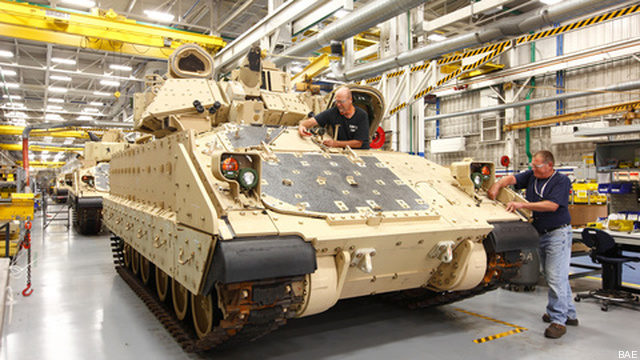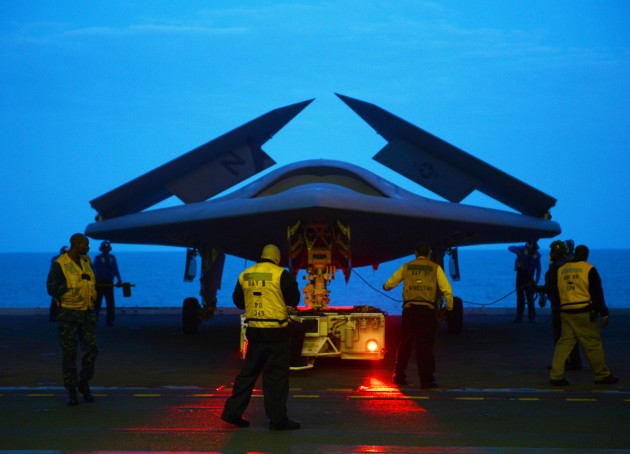Pentagon Struggles To Save New Programs: Kendall
Posted on

Frank Kendall, Under Secretary of Defense for Acquisition, Technology, & Logistics
[UPDATED with Hagel, Shaffer comments] NATIONAL PRESS CLUB: The four armed services only submitted their draft 2016 budgets to the Office of the Secretary of Defense “basically yesterday,” Undersecretary Frank Kendall said this morning — and he’s already “concerned.” As the Pentagon’s top weapons buyer, Kendall sees worrying signs. With the automatic budget cuts known as sequestration looming in 2016, he said, officials are often low-balling cost estimates to preserve their current programs while shorting long-term investments in future weapons.
While the Air Force’s Program Objective Memorandum (POM) makes some “difficult” but necessary tradeoffs, retiring aging aircraft — if Congress lets it — to preserve adequate funding for current operations and long-term modernization, Kendall said at the annual Common Defense (ComDef) conference here, other people’s POMs look less well-balanced. In particular, “the Army has made a decision to emphasize end-strength,” i.e. keeping as many people as possible, he said: “The Army has very little left in its modernization portfolio right now, and I am concerned about that.”
Even within modernization accounts, he added — and not just in the Army’s – “there’s been a big shift to investment in upgrades of [existing] programs as opposed to new products. That’s fine up to a point, but we may have gone too far.”
When times are tight, it’s a natural human reaction to hunker down, hang on to what you have, and not take risks on something new, however high the long-term pay-off might be. (Just Google “prospect theory”). But Kendall has repeatedly argued that competitors like Russia and China are catching up to the American advantages in precision weapons, computer networks, and stealth that we’ve counted on ever since the first Gulf War in 1991. That means the US needs to start investing in the next revolution — whatever it may be.
“While we’re trying to introduce new ideas and new things, the fundamental reaction is going to be to protect what we have,” Kendall lamented. “The account that has been hit the hardest is our pipeline of new products, [Pentagon spending categories] 6-4 and 6-5,” he said. “I’m concerned about what’s happening there.”
The Pentagon will focus on such concerns with “products” (i.e. weapons) in the next iteration of its Better Buying Power initiative, Kendall said, adding he hopes to roll out “BBP 3.0” on September 12th. In the longer run, Kendall will helm a “Long-Range Research & Development Planning Program aimed at assuring our technological edge through the next several decades,” to quote Defense Secretary Chuck Hagel’s announcement of the initiative this afternoon.
A brainchild of the new Deputy Secretary of Defense, Robert Work, the long-range planning initiative is inspired by the “offset strategy” of the Cold War, in which the US sought to counter Russian numbers with superior technology. This new incarnation will look at potentially revolutionary technologies such as “robotics, advanced computing, miniaturization, and 3D printing,” Hagel told an industry group in Newport, Rhode Island today. “Bob and Frank will be the key drivers of DoD’s efforts in all of these areas. They have my full confidence and my full support.”
The goal is to “strategically focus our R&D investments” as the money available for R&D goes down, Kendall said this morning. “That’s difficult in this climate but even more important than ever.”

An Army M2 Bradley being overhauled at BAE’s York, Pennsylvania factory.
Kendall’s Top Three Concerns
As an engineer himself, Kendall is especially worried about the health of the design teams that would turn cool new technology into workable new weapons. “A lot of engineers have lost their jobs,” he said. He’s particularly concerned about three areas:
Tanks and other ground combat vehicles, currently built at only two locations in the US: Lima, Ohio and York, Pennsylvania. The Army has already cancelled its program for a clean-sheet-of-paper Ground Combat Vehicle (GCV). Its largest remaining ground program, the Armored Multi-Purpose Vehicle (AMPV), is just a modification of the current M2 Bradley. (Some GCV money did move to a “next-generation” vehicle project, Kendall noted). Likewise, the Marines cancelled the ambitious high-water-speed version of their Amphibious Combat Vehicle (ACV) in favor of buying slower, cheaper designs already on the world market.
“High-performance aircraft” came next on Kendall’s worry list this morning. (Yes, the F-35 Joint Strike Fighter is the Pentagon’s costliest program currently — in fact ever — but it’s long since moved out of the design stage into tweaking and production). The Under Secretary recently led an “air dominance initiative” to look into next-generation combat aircraft, and it’s “put some things on the table as recommendations” for the budget, he told reporters, though he wouldn’t specify what.
The Navy hasn’t done a new surface ship design for years, Kendall noted as his third concern. The most recent all-new designs were the two variants of the Littoral Combat Ship (LCS), a controversial program for which the Pentagon is now considering alternatives. (That said, time and budgetary constraints may make an upgraded LCS the only workable choice). The Navy is working on a major upgrade of its workhorse DDG-51 Arleigh Burke destroyers, but the basic design still dates to the 1980s.
Kendall hopes to find funds to keep design talent working in all three of these areas, he told reporters after his public remarks, but “I’m not sure what we’ll actually be able to get into the budget at the end of the day.”
[UPDATED: One time-honored technique to keep design expertise keen and new technologies flowing is to build lots of different prototypes, a major focus for Kendall and his principal deputy assistant secretary for research and engineering, Alan Shaffer. “Prototyping will allow us to keep design teams alive,” Shaffer told reporters at ComDef, “to an extent.” While the number of weapons you buy makes a big different to production costs, it has relatively little impact on a program’s up-front design costs: “The amount of design work that goes into an advanced prototype and the [amount] that goes into something hitting Milestone B or Critical Design Review [CDR] is about the same,” he said. “You’re still going through the design process.”]

The Navy’s UCAS demonstrator made history as the first drone to take off and land from an aircraft carrier. Its proposed successor is called UCLASS.
New Starts & UCLASS
Complicating Kendall’s problem is the natural tendency by industry to offer low-ball cost estimates to make them fit into a tighter budget — a phenomenon which historically causes “60 to 70 percent of our overruns and schedule slips,” Kendall said, citing new research from the Institute for Defense Analyses (IDA).
“There’s always a way to talk yourself into a more optimistic estimate,” he said, and, under today’s pressures, “I am frankly seeing some risk-taking behavior.” So even as Kendall encourages innovation, he said, “we’re trying also to keep people from starting programs they can’t afford.”
Consider UCLASS, the controversial Navy program for a carrier-based armed drone — the Unmanned Carrier-Launched Surveillance and Strike system. A crucial meeting Kendall was to chair on UCLASS’s future, until recently scheduled for September 10th, has just been delayed again.
“It’s driven by the uncertainty about our future budgets and affordability constraints,” Kendall told me. “Affordability’s a major concern and any new start is going to be looked at very carefully right now. UCLASS is a new start, and before we even ask industry to spend bid and proposal money, we want to be reasonably confident that we’re going to be able to actually do that program and afford it.”
As sequestration returns, “the department has a near term problem but it also has a big problem starting in about 2020 with all the recapitalization we need to do out there [in the 2020s],” Kendall continued. “[Dep. Sec.] Work wants to be very careful that, before he starts anything, it’s something we can actually continue and put into the field, and that we don’t waste resources on something that’s not going to go the whole way.”
Updated 4:10 pm
Subscribe to our newsletter
Promotions, new products and sales. Directly to your inbox.
